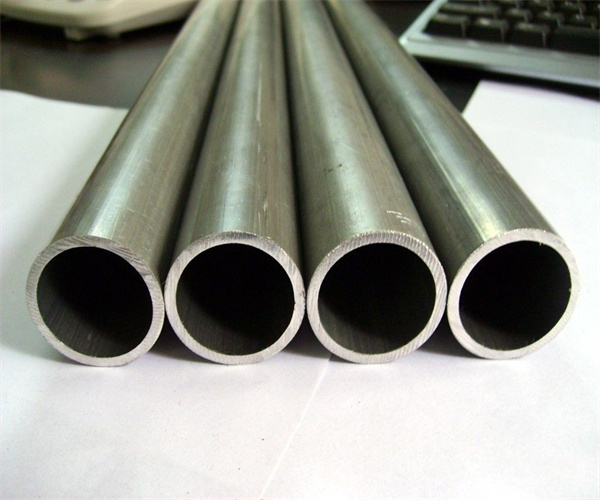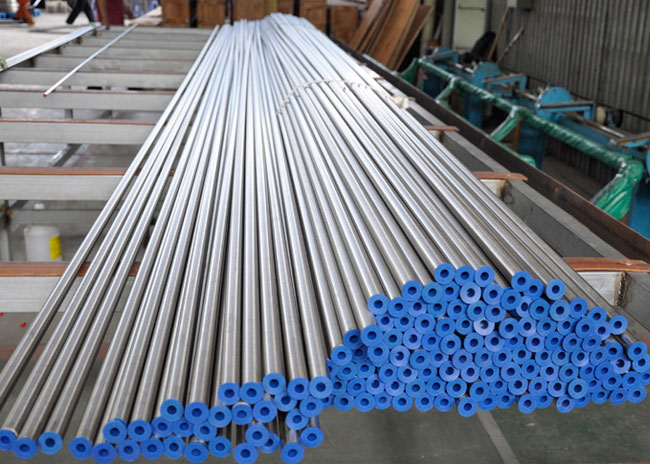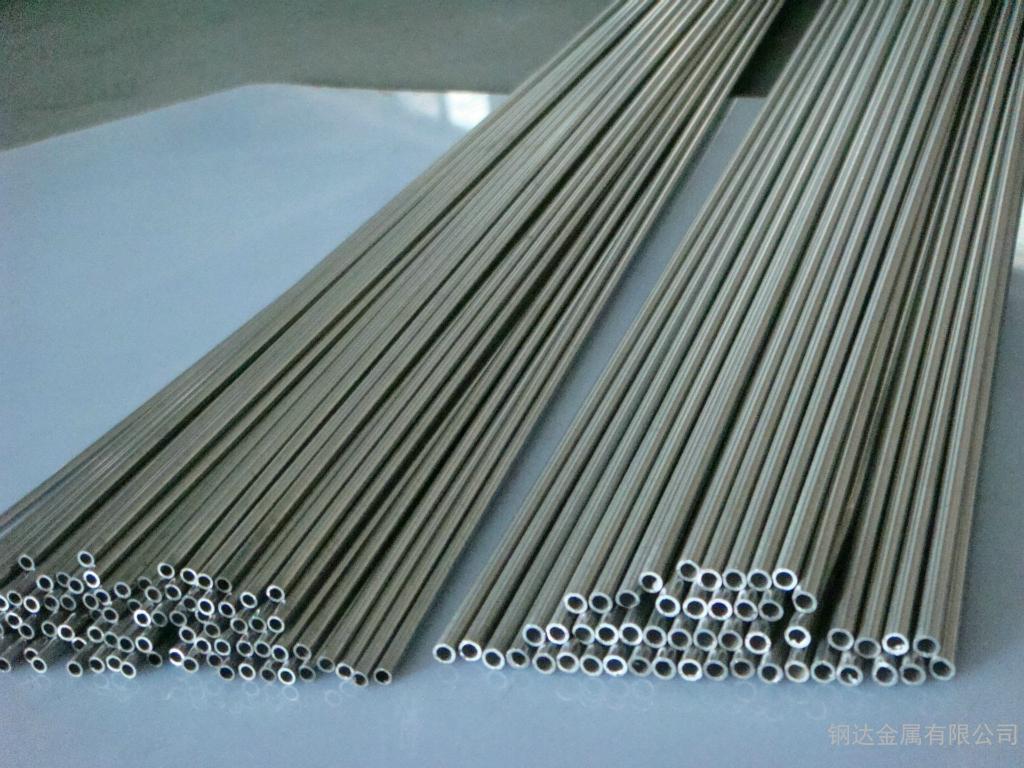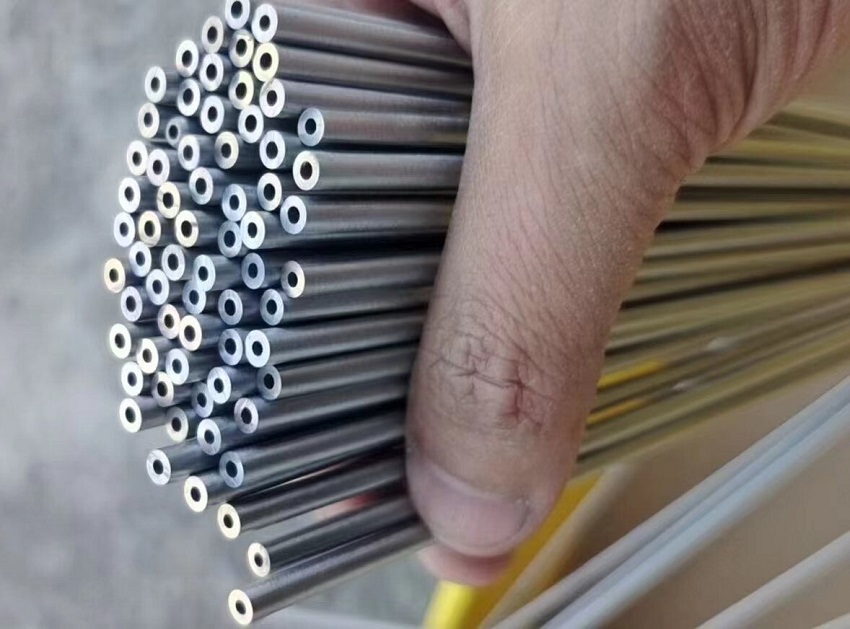NEWS CENTER
What is EN10305 E235 hydraulic steel tube?
What is EN10305 E235 hydraulic steel tube?
1. EN10305 E235 Hydraulic Steel TubeDefinition:
EN10305 E235 hydraulic steel tubes are precision cold-drawn seamless tubes designed for hydraulic applications. They are recognized for their high precision and are specifically tailored to meet the demands of hydraulic systems.
2. EN10305 E235 Hydraulic Steel Tube Material:
- Chemical Composition: E235 hydraulic steel tubes are typically composed of low carbon steel, with a chemical composition that includes elements like carbon, manganese, phosphorus, sulfur, and silicon.
- Mechanical Properties: These tubes have good weldability and are suitable for cold forming. They exhibit mechanical properties such as a specified minimum yield strength, elongation, and other characteristics defined by the E235 grade.
|
Property |
Chemical Composition |
Mechanical Properties |
|
Carbon (C) |
≤ 0.17% |
Tensile Strength: 340-480 MPa |
|
Manganese (Mn) |
≤ 1.20% |
Yield Strength: ≥ 235 MPa |
|
Phosphorus (P) |
≤ 0.035% |
Elongation: ≥ 25% (on gauge length 5.65√S0) |
|
Sulfur (S) |
≤ 0.025% |
|
|
Silicon (Si) |
- |
|
|
Other residual elements |
- |
|
3. EN10305 E235 Hydraulic Steel Tube Production Standard:
EN 10305-1 and EN 10305-4 are the European standards that specify the requirements for seamless cold drawn steel tubes. These tubes are used for hydraulic and pneumatic power systems and are often made from steel grade E235. Here’s a summary of the production standards:
EN 10305-1: Seamless Cold Drawn Steel Tubes
- Scope: This standard specifies the technical delivery conditions for seamless cold drawn steel tubes.
- Application: Hydraulic and pneumatic power systems.
- Material: E235 (1.0308), which is a non-alloy quality steel.
- Tolerances: Precise tolerances on dimensions and thickness.
- Surface Quality: High-quality surface finish.
- Technical Requirements:
- Chemical Composition: Specific limits for elements like carbon (C), silicon (Si), manganese (Mn), phosphorus (P), sulfur (S), etc.
- Mechanical Properties: Minimum yield strength, tensile strength, elongation, and hardness.
- Surface Condition: Tubes must be free from defects that could affect their use.
- Dimensional Tolerances: Precise limits on outer diameter, wall thickness, and straightness.
EN 10305-4: Seamless Cold Drawn Tubes for Hydraulic and Pneumatic Power Systems
- Scope: This standard provides the specific requirements for seamless cold drawn tubes for hydraulic and pneumatic power systems.
- Material: E235 (1.0308), E355 (1.0580) among others.
- Tolerances: Similar to EN 10305-1 but more stringent, reflecting the high precision required in hydraulic systems.
- Surface Quality: High precision and smooth surface.
- Technical Requirements:
- Chemical Composition: Similar to EN 10305-1, with specific limits on alloying elements.
- Mechanical Properties: Strict requirements for yield strength, tensile strength, and elongation.
- Internal Cleanliness: Tubes must be free from contaminants and residues.
- Dimensional Accuracy: High precision in outer diameter, wall thickness, and straightness, critical for hydraulic applications.
Key Differences:
- EN 10305-1: General precision steel tubes, applicable in various mechanical engineering applications.
- EN 10305-4: Specifically tailored for hydraulic and pneumatic systems, with stricter requirements for dimensional accuracy and internal cleanliness.
4. EN10305 E235 Hydraulic Steel Tube Dimensions:
EN10305 E235 hydraulic steel tubes are available in various dimensions, with options for different outer diameters, wall thicknesses, and lengths. These dimensions can be customized to match the specific requirements of hydraulic and pneumatic systems.
5. EN10305 E235 Hydraulic Steel Tube Delivery Condition:
The delivery condition of EN 10305 E235 hydraulic steel tubes includes various states that the tubes can be supplied in. These conditions are crucial as they determine the mechanical properties and suitability for specific applications. Here’s an overview of the typical delivery conditions:
5.1. NBK (Normalized):
- Description: Tubes are normalized in a controlled atmosphere after the final cold drawing process.
- Properties: This condition provides uniform mechanical properties and is the most common delivery condition for hydraulic and pneumatic applications.
- Typical Applications: Hydraulic and pneumatic systems, automotive industry, and mechanical engineering.
5.2. BK (Cold Finished/Hard):
- Description: Tubes are cold finished without any heat treatment.
- Properties: This condition offers high strength but reduced ductility.
- Typical Applications: Situations where high strength is required and machinability is less critical.
5.3. BKW (Cold Finished/Soft):
- Description: Tubes are cold finished followed by a stress-relieving heat treatment.
- Properties: This condition provides a good combination of strength and ductility, making the tubes easier to machine.
- Typical Applications: Applications requiring good machinability.
5.4. GBK (Annealed):
- Description: Tubes are annealed after the final cold drawing process.
- Properties: This condition provides the best ductility and machinability but lower strength compared to other conditions.
- Typical Applications: Applications requiring extensive machining and forming operations.
5.5. A (Soft Annealed):
- Description: Tubes are soft annealed to obtain the lowest possible hardness.
- Properties: This condition provides the highest formability and is suitable for applications requiring extensive forming.
- Typical Applications: Applications where maximum formability is needed, such as complex bending or forming.
6. EN10305 E235 Hydraulic Steel Tube Characteristics:
EN10305 E235 hydraulic steel tubes are characterized by their precision manufacturing, smooth internal surface, and tight dimensional tolerances. They are designed to resist deformation under high pressure and minimize fluid leakage, making them highly suitable for hydraulic applications.
7. EN10305 E235 Hydraulic Steel Tube Applications:
EN10305 E235 hydraulic steel tubes find extensive use in hydraulic and pneumatic systems. They are essential components in applications such as hydraulic cylinders, hydraulic lines, and other fluid power systems. Their capacity to withstand high pressure and precision manufacturing makes them indispensable in industries where efficient and reliable fluid transmission is crucial, including automotive, industrial machinery, and construction equipment.

EN10305 E235 Hydraulic Steel Tube
请输入搜索关键字
确定






